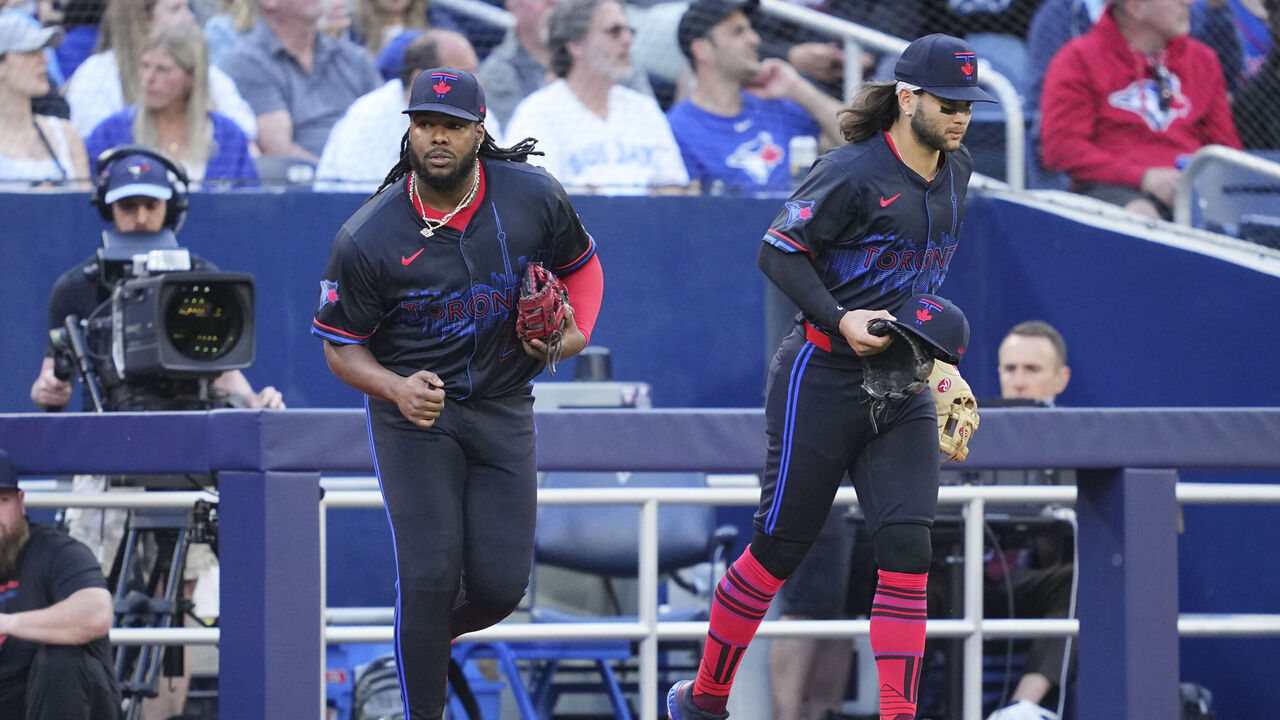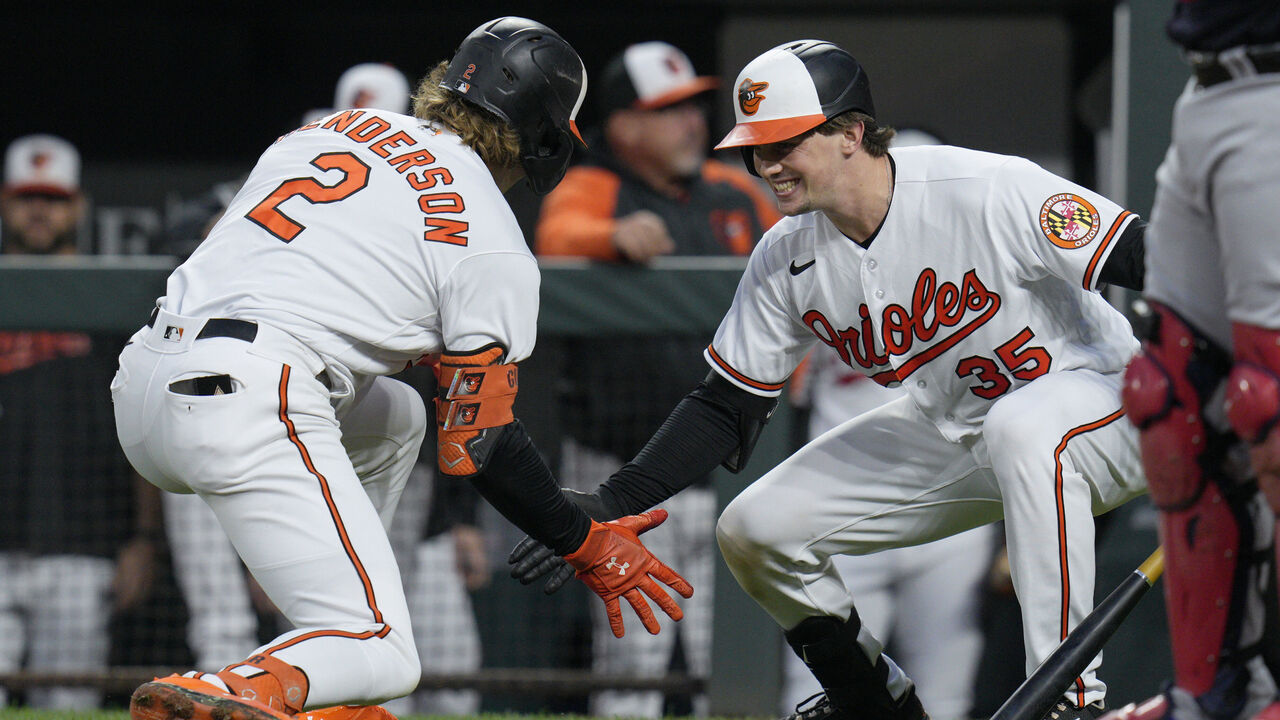Choose your own adventure: How to rebuild the Blue Jays
The Toronto Blue Jays' season was unraveling for some time before the bottom of the eighth inning Monday in Boston. But the campaign may have reached a point of no longer being salvageable in that inning.
That was when third baseman Addison Barger - camped under an infield pop-up in the night sky - seemingly and inexplicably gave way to shortstop Isiah Kiner-Falefa, who was nowhere nearby. The ball fell to the infield dirt and Red Sox outfielder Jarren Duran was credited with a double, one of the absurdities with official baseball scoring rules. The next batter, David Hamilton, homered into the right-field seats, cutting the Blue Jays' 6-2 lead. The rest of the lead evaporated moments later.
In the bottom of the ninth, with the score tied, Spencer Horwitz - a revelation with his bat to date but playing out of position at second base - double-clutched a ground ball, a pause that allowed speedy Ceddanne Rafaela to reach first safely. Rafaela later sprinted home with Boston's winning run.
The Blue Jays were supposed to be built on defense and versatility, but out-of-position defenders led to their undoing Monday. The loss was Toronto's seventh straight and arguably the season's most devastating considering Vladimir Guerrero Jr. launched a mammoth 471-foot home run to give the club a four-run lead earlier in the game.
Entering play Wednesday, the Jays' playoffs chances sat at 4.8%, according to FanGraphs. If Toronto's operating rationally, this is a roster it ought to dismantle to some degree. The question is: to what degree? Which is the better path: a dramatic overhaul or a partial sell-off with hopes of better fortune in 2025?

Choice A: Limited sell-off
The emotional - and perhaps logical - reaction is to dismantle this roster. It's quite likely this has been the most disappointing campaign of any MLB team this season. Core players like Bo Bichette and Guerrero are nearing free agency.
But there's one big problem with that approach: there's not much to sell at favorable prices.
Some of the biggest names on the roster are having either mildly disappointing years (Kevin Gausman owns a 4.26 ERA, Vladdy's only hit 10 home runs) or career-worst seasons (Bichette and George Springer). The club would be selling low on most, while Springer also has an underwater contract that likely can't be moved without attaching sweeteners like cash or prospects.
The argument for a limited teardown is tied to the idea that regression to the mean works both ways. For as much has gone wrong this year in Toronto, it's not likely to go wrong to the same degree next year if decision-makers keep the core intact. Most of the core is under club control for next season.
Perhaps coaching or process changes on the hitting side could get more out of the bats. Bichette and Guerrero should be motivated in 2025, their last year before free agency. The lineup could be deeper, too, with Horwitz performing well in his first exposure to major-league pitching and Davis Schneider posting a 134 wRC+ over his first 401 career plate appearances.
One problem with a limited sell-off is that the Jays don't have many of the most obvious asset class to jettison in a partial sell-off: expiring contracts.

Left-handed starter Yusei Kikuchi stands out as someone who could return value as an impending free agent. Relief pitcher Yimi García is another if he can prove his elbow is healthy before the July 30 trade deadline. Kevin Kiermaier and Justin Turner are on one-year deals, but the aging veterans aren't likely to draw much interest.
José Berríos is an interesting case - and perhaps a test of how deep a rebuild would be.
He's generally pitched well since the start of last season and is a durable arm. He's owed $86 million over the next four years, with a potential opt out after 2026. It's a reasonable contract, especially for larger markets, and almost every contender could use a pitcher.
In a more aggressive sell-off, Berríos is definitely a name to move. In a shallower retool, he's perhaps an arm to keep.
The counterargument to a partial teardown is that it's a half measure, and it's a move without conviction, which is dangerous in a division as competitive as the American League East.
Back in 2016, Blue Jays president Mark Shapiro was asked by MLB.com about the worst trade he ever made. He said it was in his first year as general manager in Cleveland. Shortly after taking over in November 2001, he traded star second baseman Roberto Alomar to the Mets in an eight-player deal that featured a return package of both win-now major leaguers like Matt Lawton, and prospects, headlined by Alex Escobar and Billy Traber.
"That was a trade that was firmly in the middle," Shapiro said. "We were recognizing that we needed to rebuild with the addition of prospects but also looking to remain competitive (with Lawton).
"Had we been more firmly committed in one direction - either contending or rebuilding - we would have made a trade that netted a better return. We learned from that experience and adjusted to make better trades with Bartolo Colon and those that followed him, providing us a core of talent that formed the teams of 2005-07."
By that rationale, the Jays need to go all-in one way or the other.
Choice B: Overhaul
There are clear reasons why a total teardown is a popular approach for rebuilding clubs.
The success of the Astros, Cubs, and now the Orioles this century are exhibits A, B, and C. Those clubs all demonstrated the benefits of reaching the bottom. The draft capital and bonus-pool dollars the Astros and Cubs accumulated allowed them to build World Series winners. The Orioles won 101 games last year and will likely flirt with triple-digit wins again this year.
In a total Jays overhaul, no player on the roster would be untouchable, including pre-arbitration regulars like Daulton Varsho. Toronto's low-ranked farm system needs help.

But complete tear downs aren't without risk either.
There have been 42 seasons of 100-plus losses in the majors since 2001, authored by 18 MLB clubs. Of those 18 teams, nine emerged to reach the playoffs at least once in a five-season period after recording 100 losses. Within five years of losing 100 games, three teams won World Series titles: the 2016 Cubs, 2017 Astros, and 2023 Rangers. Two others won pennants: the 2008 Rays and the 2012 Tigers.
At one-in-three odds, that's not a bad risk - if an ownership group and fanbase can stomach the wait.
However, half the 18 clubs to hit 100 losses failed to make the playoffs in the next five years. And if a team doesn't execute its rebuild properly, it can become irrelevant for a decade. Unlike tanking in the NFL or NBA, where a quarterback or a couple of stars can turn around a franchise's fortunes quickly, a baseball turnaround requires patience and a multitude of draft and player-development choices to work out.
When the Astros hired Jeffrey Luhnow to run their baseball operations after their 106-loss season in 2011, the club endured seasons of 107, 111, and 92 losses before reaching the 2015 postseason. The club then took a step back, missing the playoffs in 2016, before a gigantic leap forward in 2017 led to a World Series title (albeit tarnished by its sign-stealing scandal).
The Cubs endured three consecutive losing seasons after hiring Theo Epstein - and five total - before returning to the playoffs in 2015 and ending their 108-year World Series curse the following year.
In Mike Elias' first year running the Orioles in 2019, they lost 100 games. They lost 100-plus again in his third season, and didn't reach the postseason until last season, in Year 5. While Elias learned what worked and what didn't in Houston, patience was still required.
If the Blue Jays attempt a deep rebuild in the near future, is their corporate ownership at Rogers Communications willing to wait until 2028 or 2029 at the earliest to return to the postseason?
The decision to embark on a deep rebuild also isn't made in a vacuum. Rogers owns the team and the TV and radio networks that carry the games. There's also the recent expense of the newly renovated Rogers Centre. There's a reason why deep rebuilds are rarely attempted by choice in markets like New York, Boston, and Los Angeles. Ownership also has to trust it has the right baseball leadership group in place to shepherd a club through such a period.

The Blue Jays live in a tough neighborhood. The Yankees and Red Sox have been able to turn around quickly after dismal recent seasons. The Orioles have taken up residence at the top of the AL. The Rays have a proven formula for getting the most wins out of low payrolls. Perhaps those are reasons for the Jays to rebuild in a significant and focused manner.
Emotionally, a complete retooling effort is a difficult decision. It may be tough for Rogers' board of directors and the Jays' baseball leadership group to give up on the Guerrero-Bichette era before they've won a playoff series - even one playoff game. But if they wait, they risk losing some of their top players for little or no return, too.
In a vacuum, a deep rebuild is likely the right path. Patience is a virtue, but success isn't guaranteed by taking such a route. Even if it materializes, the wait will be long.
Travis Sawchik is theScore's senior baseball writer.